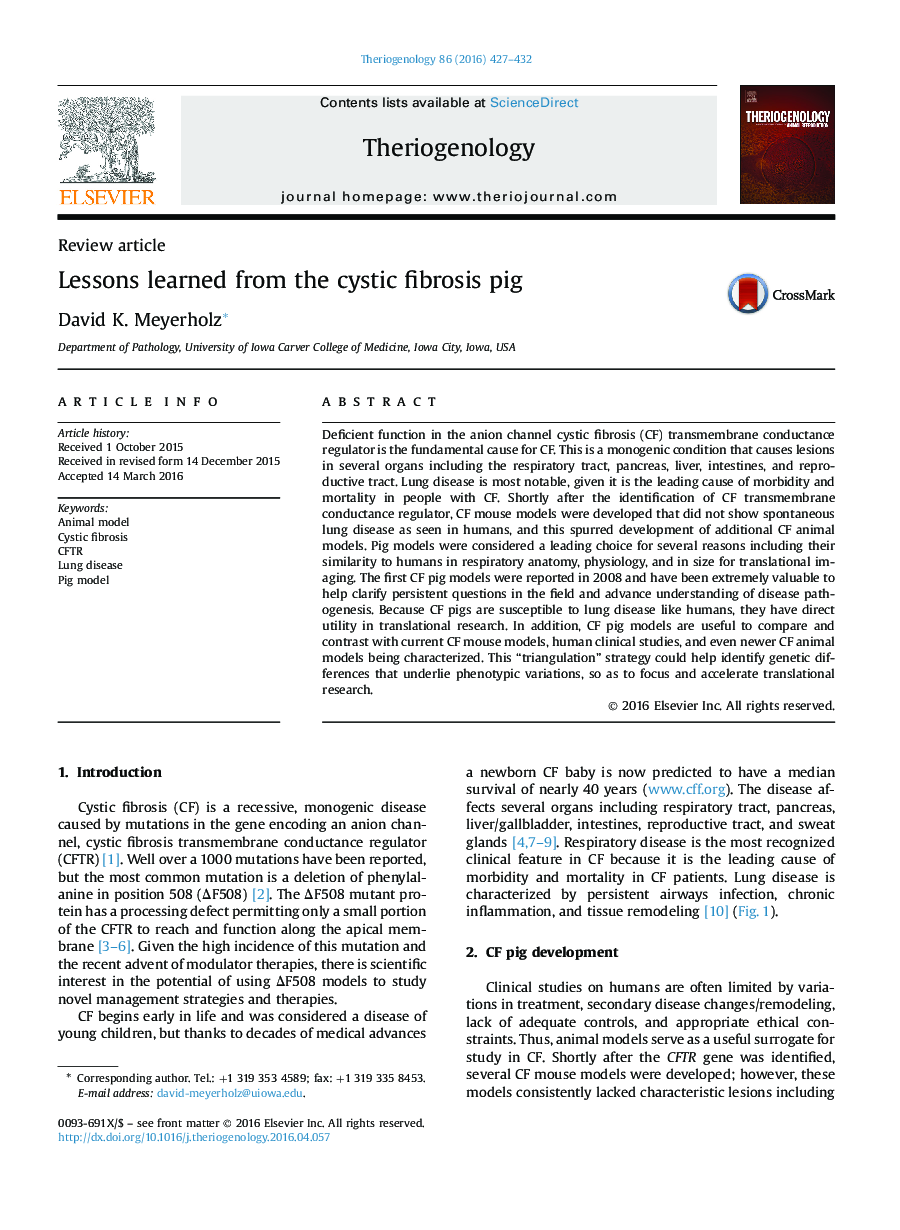| Article ID | Journal | Published Year | Pages | File Type |
|---|---|---|---|---|
| 10891642 | Theriogenology | 2016 | 6 Pages |
Abstract
Deficient function in the anion channel cystic fibrosis (CF) transmembrane conductance regulator is the fundamental cause for CF. This is a monogenic condition that causes lesions in several organs including the respiratory tract, pancreas, liver, intestines, and reproductive tract. Lung disease is most notable, given it is the leading cause of morbidity and mortality in people with CF. Shortly after the identification of CF transmembrane conductance regulator, CF mouse models were developed that did not show spontaneous lung disease as seen in humans, and this spurred development of additional CF animal models. Pig models were considered a leading choice for several reasons including their similarity to humans in respiratory anatomy, physiology, and in size for translational imaging. The first CF pig models were reported in 2008 and have been extremely valuable to help clarify persistent questions in the field and advance understanding of disease pathogenesis. Because CF pigs are susceptible to lung disease like humans, they have direct utility in translational research. In addition, CF pig models are useful to compare and contrast with current CF mouse models, human clinical studies, and even newer CF animal models being characterized. This “triangulation” strategy could help identify genetic differences that underlie phenotypic variations, so as to focus and accelerate translational research.
Related Topics
Life Sciences
Agricultural and Biological Sciences
Animal Science and Zoology
Authors
David K. Meyerholz,
